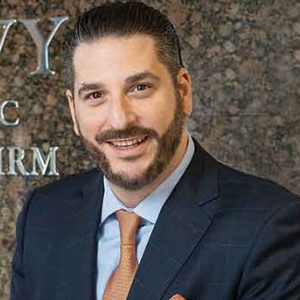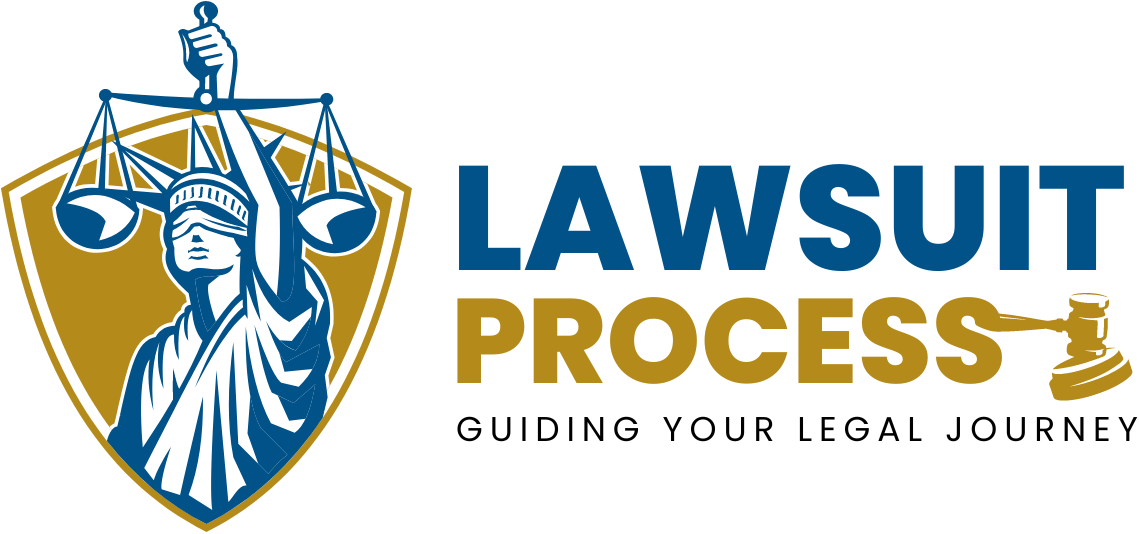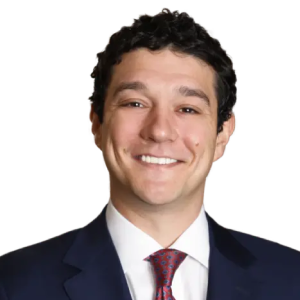Personal Injury
Resources, Articles, and Insights on Personal Injury Lawsuits


Richard M. Zielinski
Richard Zielinski, practicing in our Boston and New York offices, is a...
Personal Injury Attorney
New York, NY


Brian J. Levy
Brian J. Levy, the founding attorney of Brian J. Levy & Associates,...
Personal Injury Attorney
Bronx, NY


Gary DiMuzio
Gary DiMuzio is a partner in the Asbestos Department at Simmons Hanly...
Personal Injury Attorney
New York, NY


Danielle Corbisiero
Danielle Corbisiero serves as an Associate in the Commercial Litigation practice at...
Personal Injury Attorney
New York, NY
Frequently Asked Questions
What is a personal injury lawsuit?
A personal injury lawsuit is a legal dispute that arises when one person suffers harm from an accident or injury, and someone else might be legally responsible for that harm. These lawsuits are typically filed by the injured person, known as the plaintiff, against the party or parties believed to be legally responsible, known as the defendant. The goal is to recover compensation for losses such as:
- Medical bills
- Lost wages
- Property damage
- Pain and suffering
How do I know if I have a personal injury case?
To determine if you have a valid personal injury case, you’ll need to consider a few critical elements:
- There must be an injury: This could be physical, emotional, or psychological.
- The injury must be caused by another’s negligence, recklessness, or intentional act: Being injured isn’t enough — another party must be at fault.
- You must have measurable damages: Such as medical expenses, lost income, or pain and suffering.
What types of cases fall under personal injury?
Personal injury law covers a wide range of case types, all of which involve harm caused to an individual due to someone else’s negligence or intentional actions. Some of the most common types include:
- Car accidents: Typically involve driver negligence.
- Slip and fall accidents: Property owners may be liable for unsafe conditions.
- Medical malpractice: When a healthcare provider’s error harms a patient.
- Product liability: Injuries from defective or dangerous products.
- Workplace injuries: Sometimes handled through workers’ compensation.
- Dog bites: Owners may be liable if their pet injures someone.
- Wrongful death: When negligence results in fatal injury.
How long do I have to file a personal injury lawsuit?
The time limit to file a personal injury lawsuit is called the statute of limitations. It varies by state and type of claim, but for most personal injury cases, it ranges from one to three years from the date of the injury. Exceptions include:
- Discovery rule: If the injury wasn’t immediately apparent, the clock may start when it was discovered or should have been discovered.
- Claims against government entities: These often have shorter notice deadlines, sometimes 30 to 90 days.
How much is my personal injury case worth?
The value of a personal injury case depends on many factors, including:
- Severity of your injuries: More serious injuries usually lead to higher compensation.
- Medical expenses: Past and future costs related to treatment.
- Lost wages: If you missed work or can’t return to work.
- Pain and suffering: For physical pain and emotional distress.
- Permanent disability or disfigurement: Injuries with long-term effects increase value.
- Property damage: Such as vehicle damage in an accident.
What should I do immediately after a personal injury accident?
The actions you take after an accident are crucial to protecting your rights:
- Seek medical attention: Even if injuries seem minor, get checked by a doctor.
- Document the scene: Take photos of injuries, the scene, and any damage.
- Collect information: Get names, contact details, and witness statements.
- Report the incident: Notify police, management, or your employer, depending on where it happened.
- Avoid admitting fault: Be careful with your words and never post about the incident on social media.
- Contact a personal injury attorney: Get legal advice to protect your claim.
Do I need a lawyer for a personal injury case?
While you’re not required to have a lawyer, hiring one can significantly improve your outcome. A personal injury lawyer can:
- Gather evidence and build a strong case
- Negotiate with insurance companies who aim to minimize payouts
- Represent you in court if needed
- Maximize your compensation by calculating all losses
What is negligence in a personal injury case?
Negligence is the foundation of most personal injury cases. It means someone failed to act with reasonable care, and that failure caused another person harm. To prove negligence, four elements must be established:
- Duty of care: The defendant had a legal obligation to act responsibly.
- Breach of duty: The defendant failed to fulfill that duty.
- Causation: The breach directly caused the injury.
- Damages: The plaintiff suffered losses because of the injury.
How long does a personal injury case take to settle?
The time it takes to settle a personal injury case can vary:
- Simple cases may resolve in 3–6 months.
- Complex cases with serious injuries or disputed liability may take 1–2 years or more.
- Length of medical treatment
- Delays in insurance negotiations
- Willingness of parties to settle
- The court’s schedule if the case goes to trial
What compensation can I receive in a personal injury lawsuit?
Compensation — or “damages” — in a personal injury lawsuit is meant to make you whole. It includes both economic and non-economic damages. Economic damages:
- Medical expenses (past and future)
- Lost wages or income
- Loss of earning capacity
- Property damage (e.g., vehicle repairs)
- Pain and suffering
- Emotional distress
- Loss of enjoyment of life
- Loss of companionship or consortium
Who pays for my medical bills after a personal injury accident?
Initially, you may be responsible for paying your medical bills, even if the accident wasn’t your fault. However, who ultimately pays depends on the circumstances of the case and the available insurance coverage. Here are the common sources of payment:
- Your health insurance: Your own health insurance may cover treatment costs initially.
- Auto insurance: If the injury was due to a car accident, your Personal Injury Protection (PIP) coverage or the at-fault driver’s insurance may apply.
- Workers’ compensation: For work-related injuries, medical expenses are usually covered by workers’ compensation insurance.
- The at-fault party: If your case is successful, the negligent party or their insurer will typically reimburse you for medical expenses as part of the settlement or court award.
What is the role of insurance companies in personal injury claims?
Insurance companies play a major role in personal injury claims because they typically cover the liability for the person or entity at fault. When you file a claim, the insurance adjuster assigned to the case investigates the incident, reviews medical records, and evaluates your damages to determine how much they are willing to pay. However, insurance companies are businesses, and their goal is to pay out as little as possible. That’s why you should be cautious when dealing with adjusters. They may:
- Ask for recorded statements to use your words against you
- Pressure you into accepting a quick, low settlement
- Delay the process hoping you’ll give in
What happens if I'm partially at fault for the accident?
If you’re partially at fault for a personal injury accident, you may still be able to recover compensation, depending on your state’s laws. This concept is known as **comparative negligence**. States handle it in a few different ways:
- Pure comparative negligence: You can recover damages even if you are 99% at fault, but your compensation is reduced by your percentage of fault.
- Modified comparative negligence: You can recover damages only if you are less than 50% or 51% at fault (depending on the state).
- Contributory negligence: In a few states, if you are even 1% at fault, you may be barred from recovering any compensation.
How is pain and suffering calculated in a personal injury case?
Pain and suffering is a form of non-economic damages that compensates for the physical pain and emotional distress caused by an injury. It’s more subjective than medical bills or lost wages, so calculating it can be challenging. Common methods include:
- Multiplier method: Your total economic damages are multiplied by a number (usually between 1.5 and 5) based on the severity of your injuries.
- Per diem method: A daily rate is assigned for each day you experience pain and suffering, multiplied by the number of days you’re affected.
- The severity and duration of the injury
- Long-term impact on your lifestyle
- Emotional trauma or psychological effects
What is a settlement, and should I accept it?
Compensation — or “damages” — in a personal injury lawsuit is meant to make you whole. It includes both economic and non-economic damages. Economic damages:
- Medical expenses (past and future)
- Lost wages or income
- Loss of earning capacity
- Property damage (e.g., vehicle repairs)
- Pain and suffering
- Emotional distress
- Loss of enjoyment of life
- Loss of companionship or consortium
What happens during a personal injury trial?
If your personal injury case doesn’t settle, it may go to trial. The trial process involves several stages:
- Jury selection: If the trial involves a jury, both sides choose jurors who they believe will be fair and impartial.
- Opening statements: Each side presents an overview of their case.
- Presentation of evidence: Both parties introduce evidence, call witnesses, and conduct cross-examinations.
- Closing arguments: Each attorney summarizes their case and tries to persuade the jury or judge.
- Verdict: The jury (or judge in a bench trial) decides whether the defendant is liable and, if so, how much compensation should be awarded.
Can I sue a government agency for personal injury?
Yes, you can sue a government agency for personal injury, but the process is more complicated than suing a private individual or business. Claims against city, state, or federal government agencies are governed by specific laws like the **Federal Tort Claims Act (FTCA)** or individual state tort laws. Common examples include:
- Injuries on public property (e.g., sidewalks, parks, buildings)
- Accidents involving government vehicles
- Negligence by public employees or agencies
- You must file a “notice of claim” within a short time frame (often 30 to 180 days)
- The government has a period to investigate and respond before you can sue
- There may be caps on damages or immunity for certain actions
What if the at-fault party doesn’t have insurance?
If the at-fault party in your personal injury case doesn’t have insurance, recovering compensation can be more difficult — but it’s not impossible. You have a few options:
- Uninsured motorist (UM) coverage: If you were injured in a car accident and have UM coverage, your own insurance may cover your damages.
- Sue the individual directly: You can file a lawsuit against the person responsible, but collecting payment may be hard if they lack assets.
- Other liable parties: Sometimes, others may share liability (such as employers, property owners, or product manufacturers).
Will I have to go to court for my personal injury case?
Most personal injury cases do not go to court. In fact, over 90% are resolved through settlements before reaching trial. That said, you should always be prepared for the possibility of litigation. You may have to go to court if:
- The insurance company refuses to offer a fair settlement
- Liability is disputed or unclear
- There’s a disagreement over the value of your damages
How can a personal injury lawyer help me?
A personal injury lawyer plays a vital role in helping you recover the compensation you deserve after an accident. Their responsibilities include:
- Case evaluation: They assess the strength of your case and estimate potential compensation.
- Evidence gathering: Lawyers collect medical records, accident reports, witness statements, and expert opinions.
- Negotiation: They handle discussions with insurance companies to secure a fair settlement.
- Legal strategy: If needed, they file a lawsuit and represent you in court.
- Maximizing compensation: Attorneys understand what damages to pursue and how to prove them.








